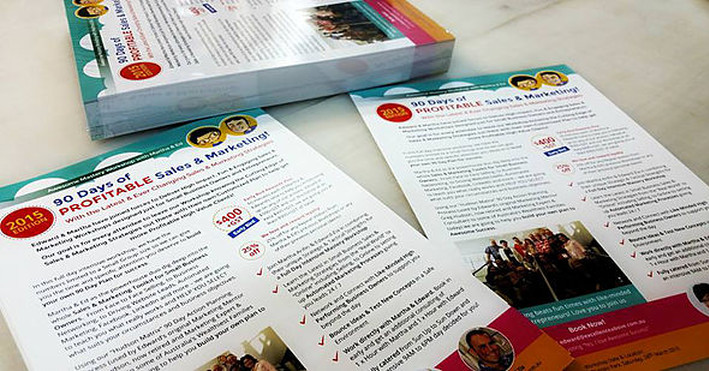Which format, Flyers and Brochures suit your needs?
After years in the printing industry, it’s become obvious that not a lot of marketer’s care about the differences between flyers and brochures. Even more surprising is that we’ve met a lot of designers who aren’t sensitive to what makes each of these formats unique. Flyers and brochures excel at different kinds of marketing strategies, and the design considerations that accompanies these should likewise be looked into.
While we can’t tell you how to run your marketing campaigns, we can give you an insight to what exactly makes brochures different from flyers. Let’s look at the specifics of each format.
Flyers
- Flyers are typically single sheet and unfolded.
- They may be printed on one or both sides.
- Flyers are most often printed on standard 8.5″x 11″ or A4 paper, but they may be any size so long as they’re relatively easy to handle.
- While they may be used for a variety of purposes, they are best used for short, concise messages.
- They are most often distributed by hand but may also be mailed.
- The way flyers are used means they tend to have a shorter lifespan compared to most print formats.
- Flyers are generally distributed more freely when used in short-lived promotions.
- Flyers intended for reference materials are normally printed on thicker paper or cardstock.
- Other names for flyers include: leaflets, handbills, and circulars.
Flyers are most often used for:
- Event announcements
- Advertising openings for new establishments like clubs, bars, restaurants, etc
- Fact sheets handed out at trade shows or conferences.
- As handouts and newspaper/magazine inserts
- As information sheets, as part of a promotional campaign
- Other general localized advertisements
Brochures
- Unlike flyers, brochures always have folds.
- Brochures tend to be printed on both sides.
- They may be made from single or multiple sheets and come in a wide variety of folds.
- Brochures are not to be confused with booklets, which also have multiple sheets like some brochures, but are always bound.
- Brochures made with relatively few sheets are sometimes called “pamphlets,” but both terms are interchangeable. To make things more confusing, “pamphlets” can also mean a bunch of flyers.
- Brochures are intended to be repeatedly referred to and handled and are consequently best printed on more durable paper or cardstocks and given a coating to help better resist moisture and fading.
- Distribution for brochures is normally more discriminate because of the costs involved with printing brochures compared to flyers.
Brochures are popular for the following applications:
- As reference materials for customers and employees
- To follow-up other promotional materials to help close a sale
Both brochures and flyers have their specific advantages, and neither medium is necessarily better than the other. Before you order any print material, try to understand the specific advantages each medium offers for your campaign. While flyers and brochures might be substituted for each other in a pinch, you can get the most value for your dollar by going with the one that suits your needs best.


Leave A Comment